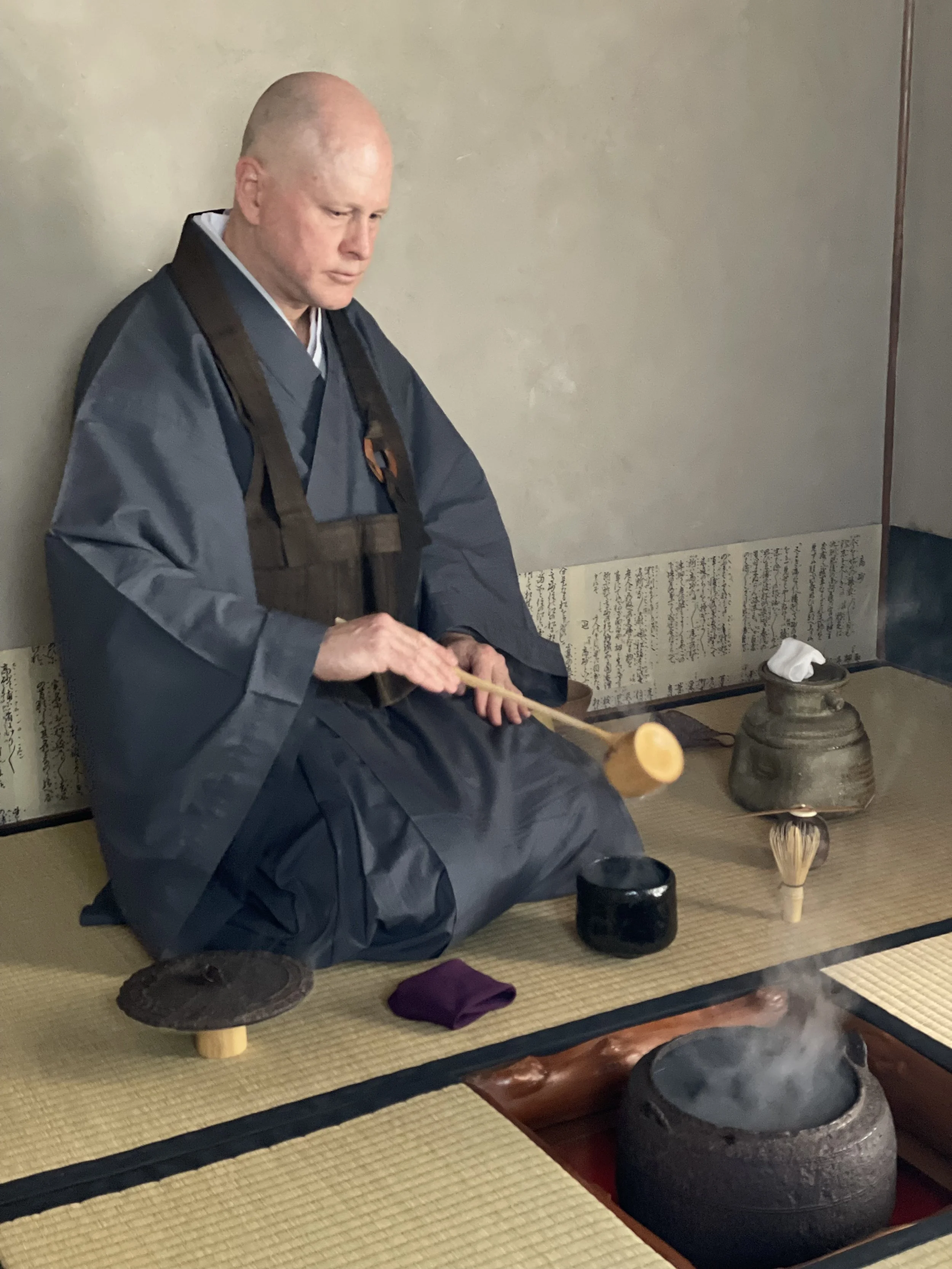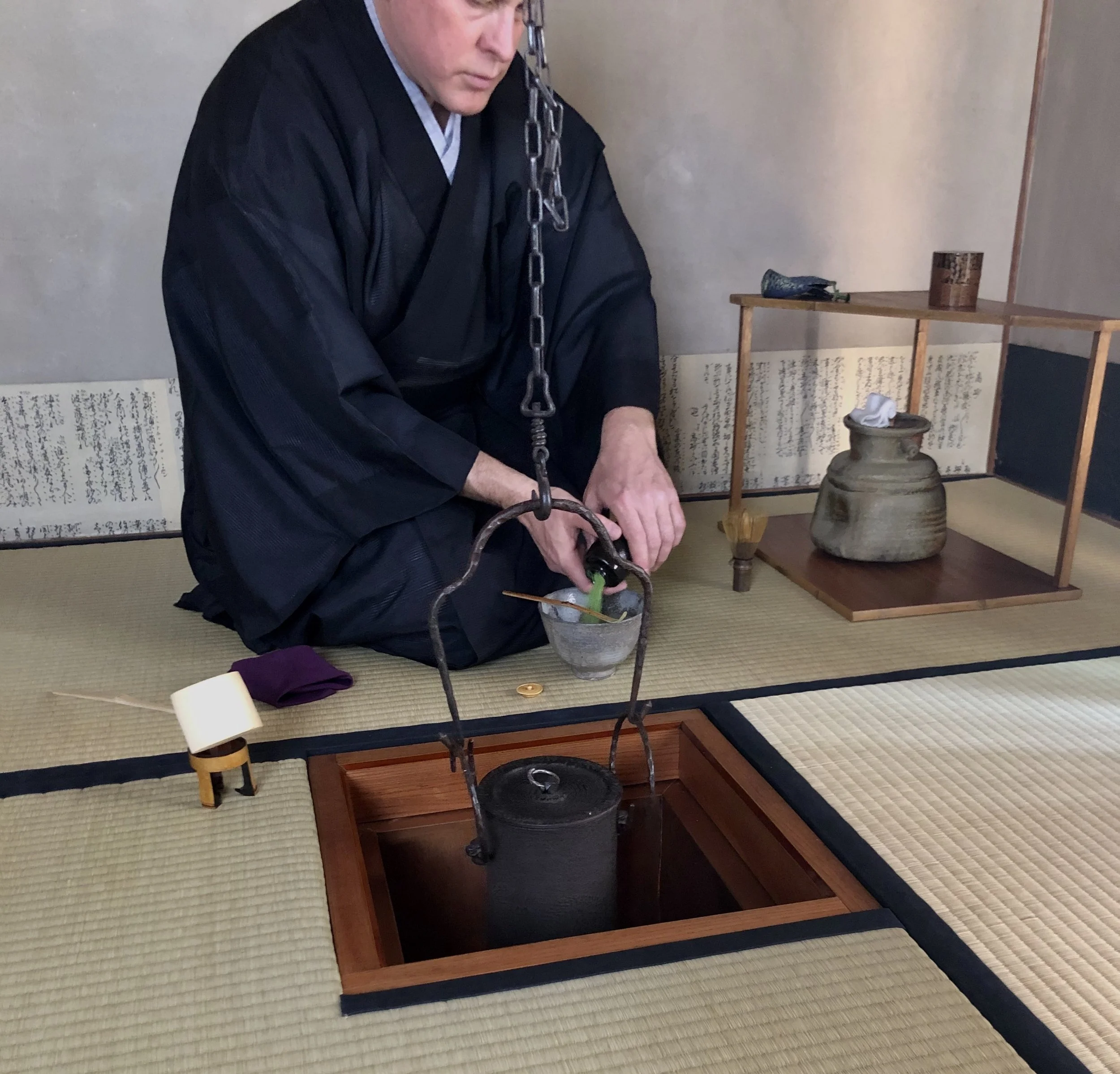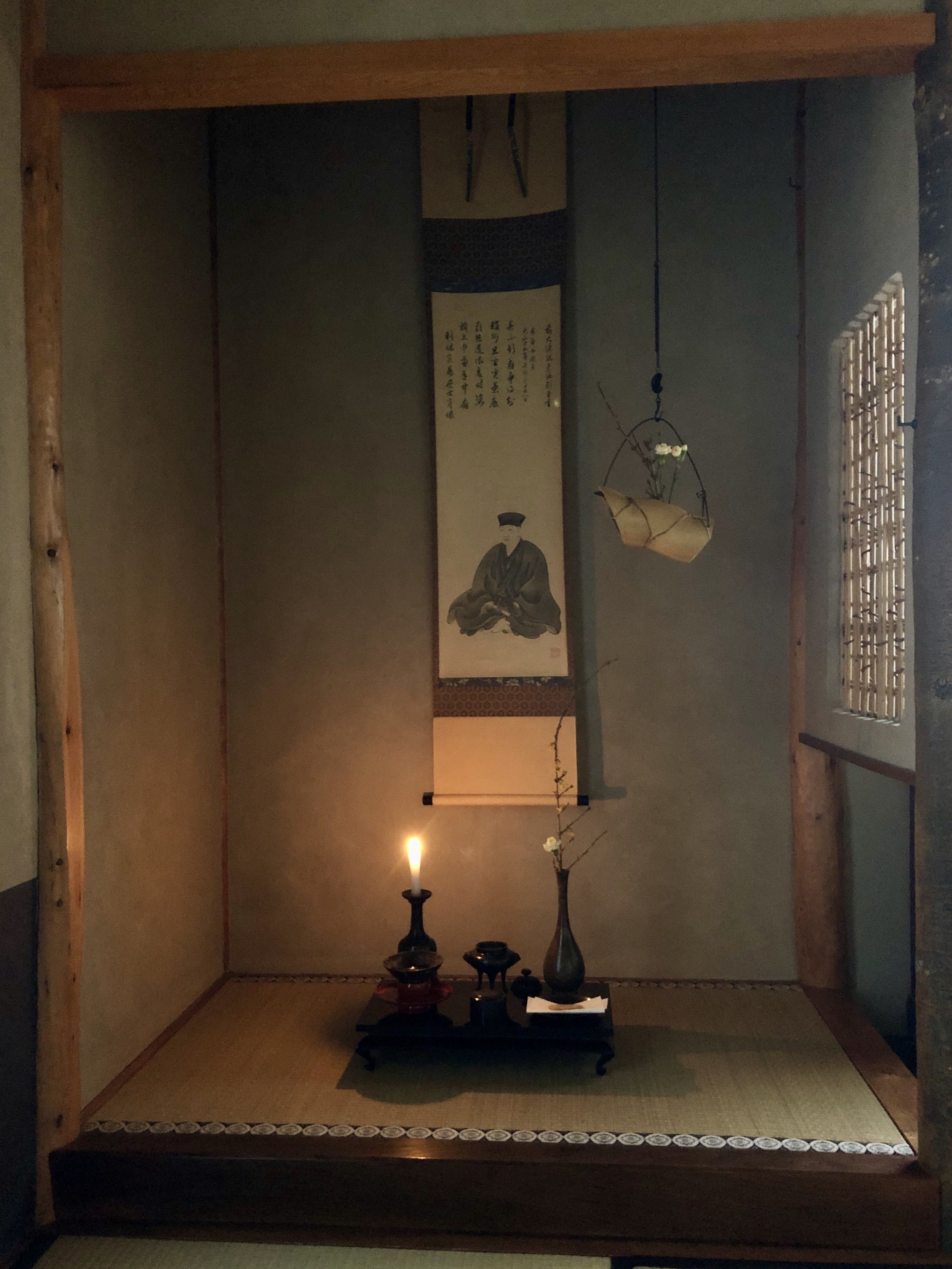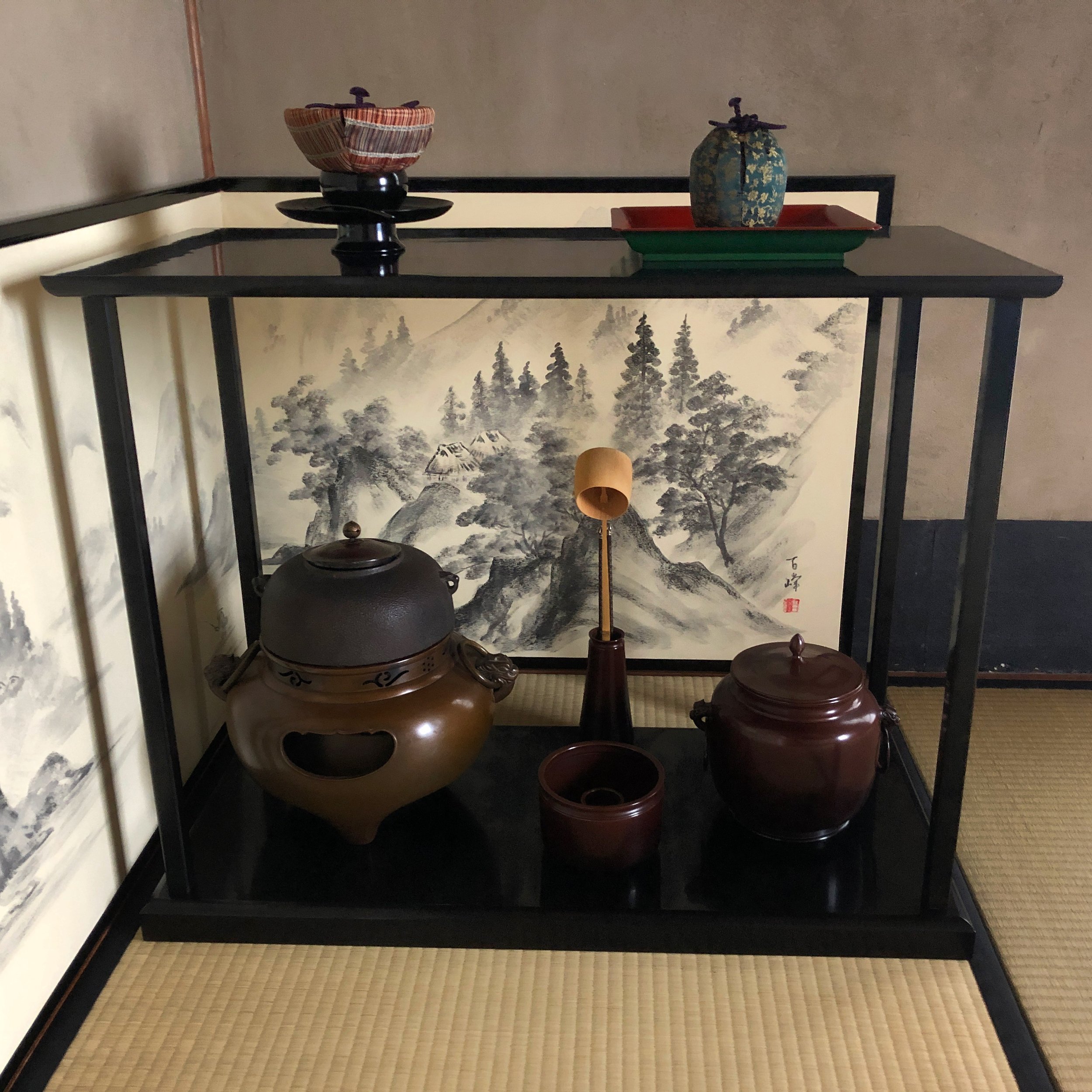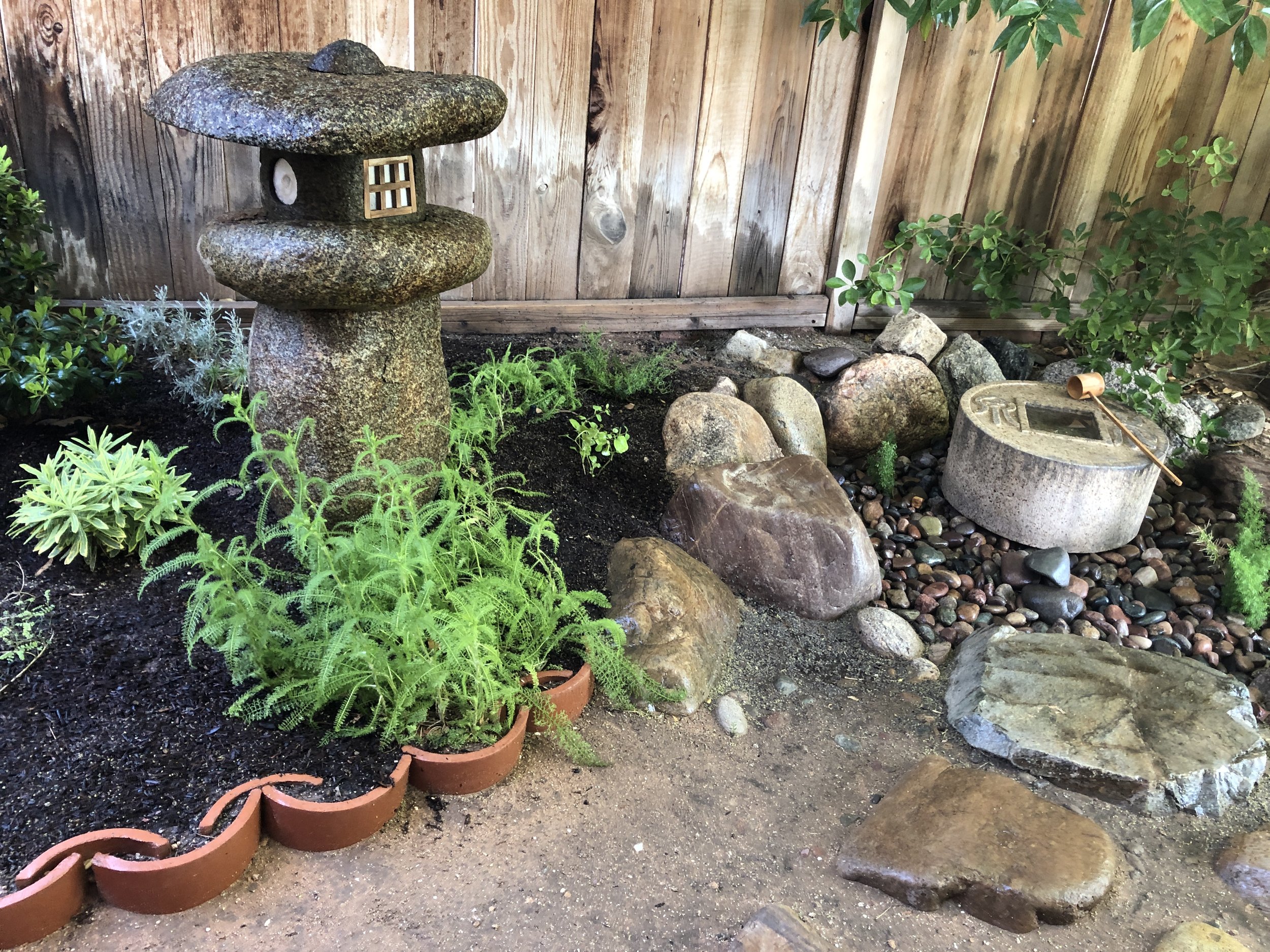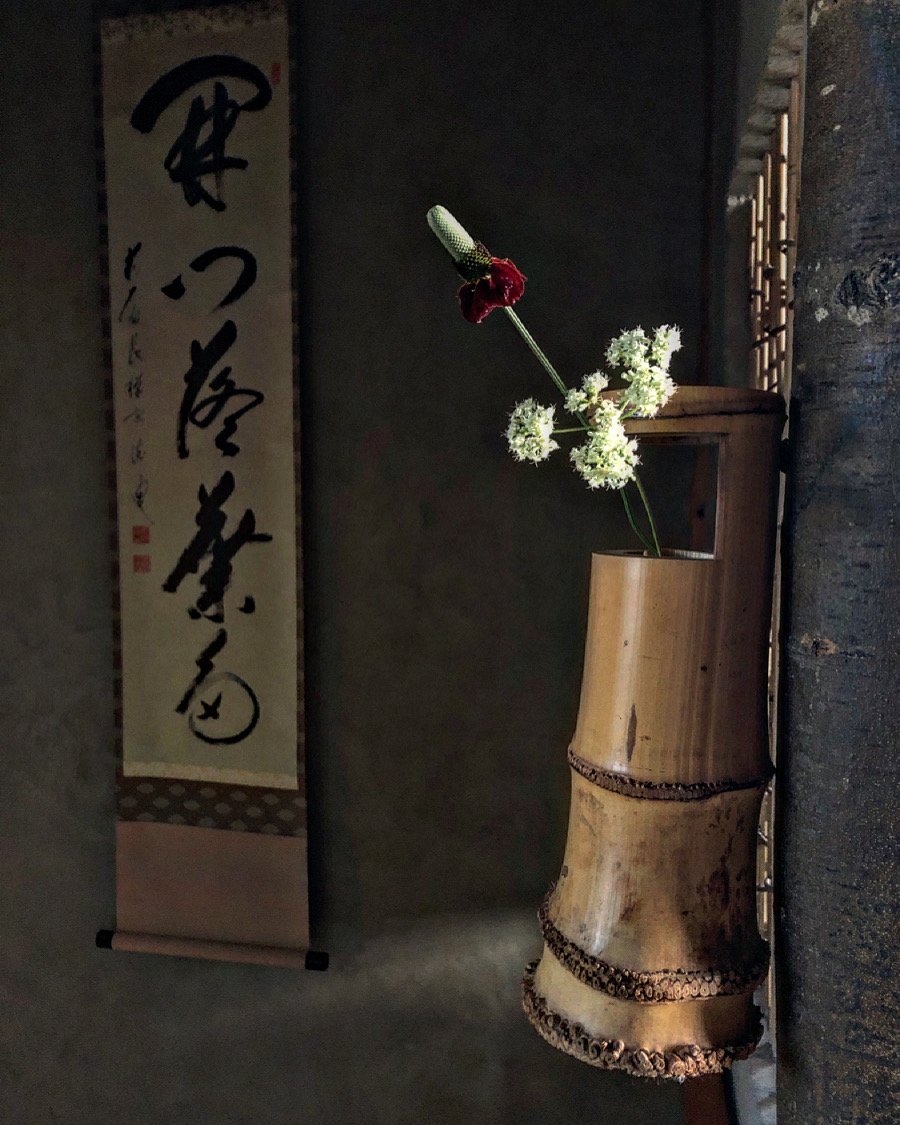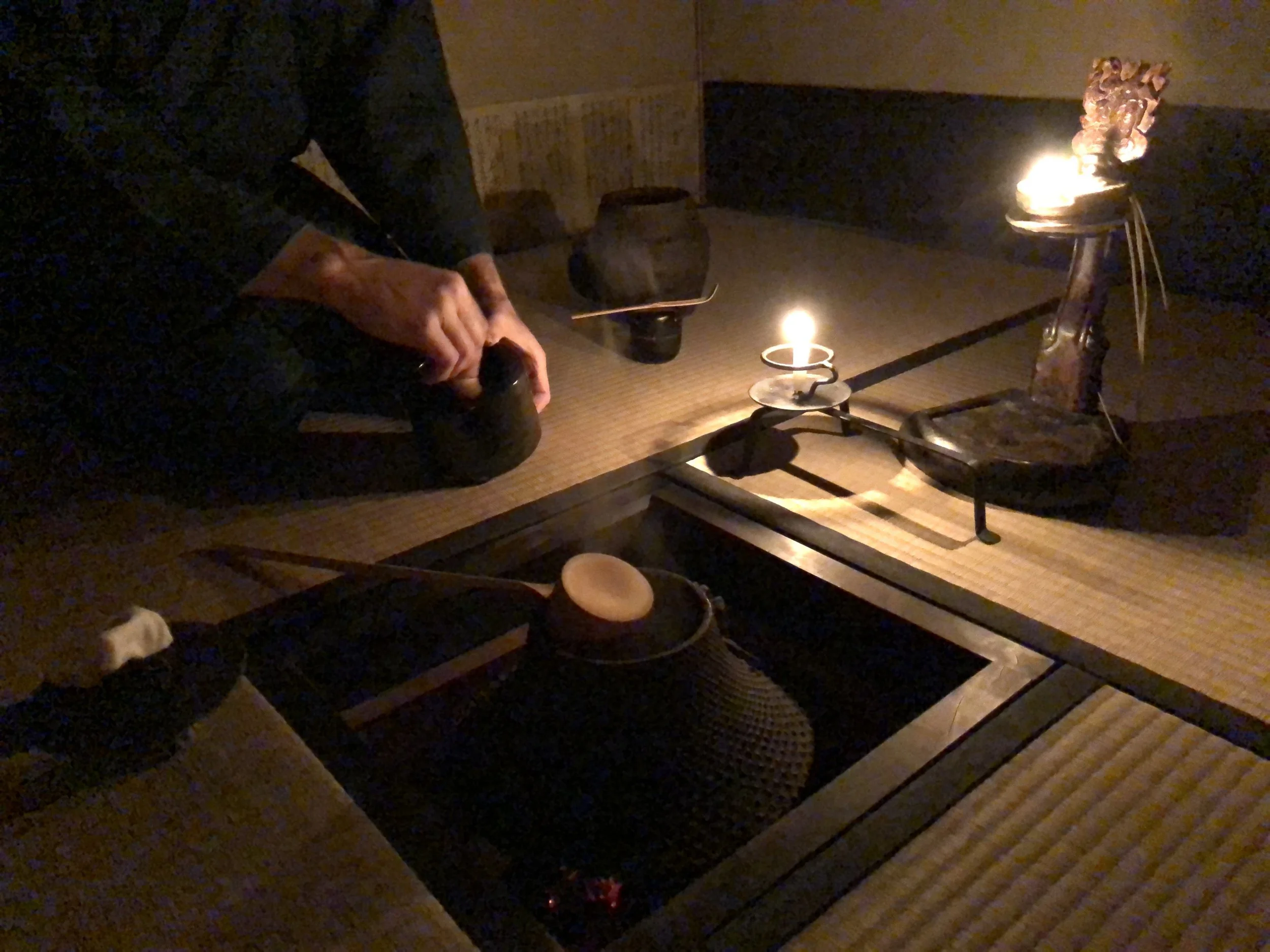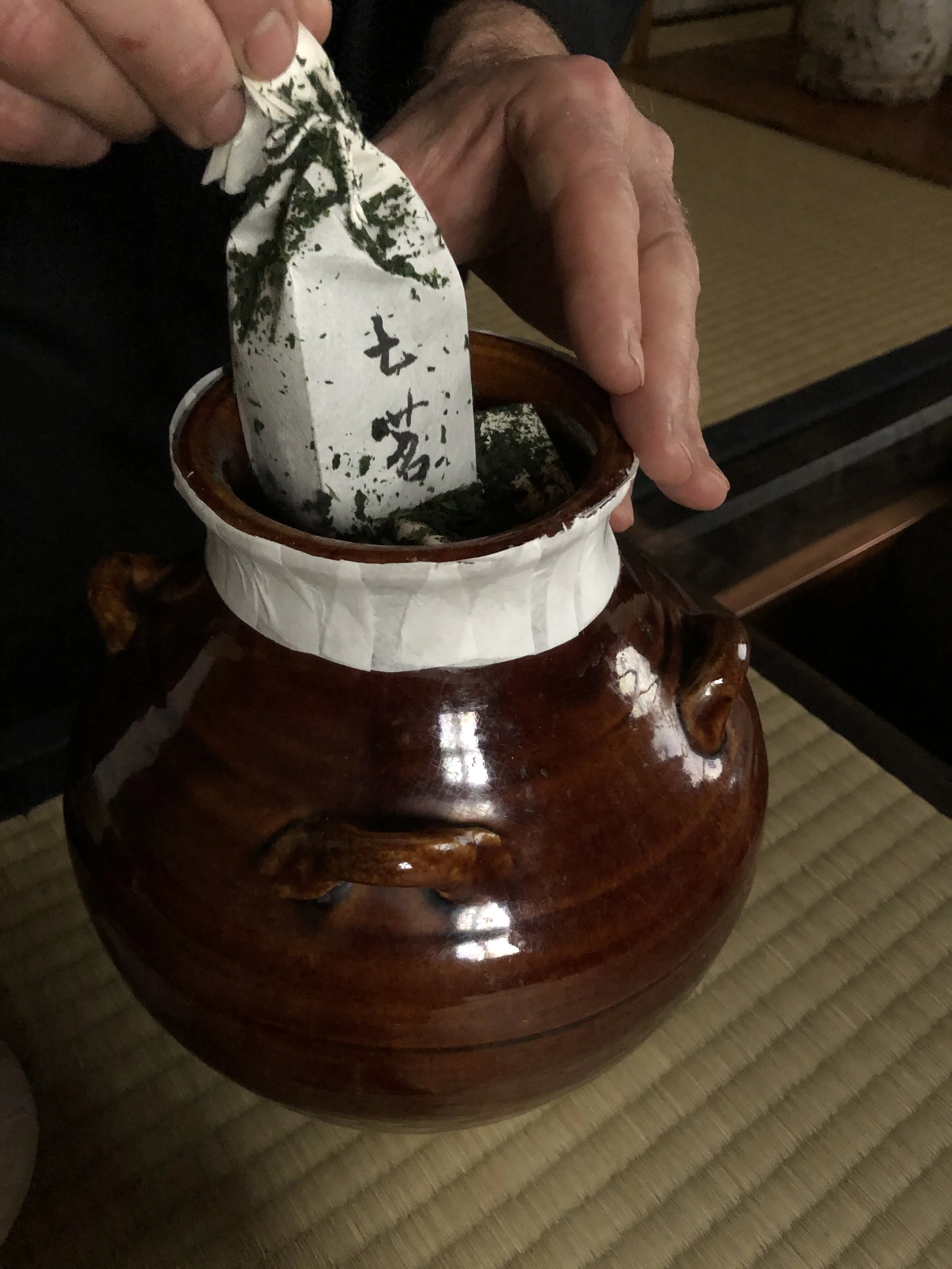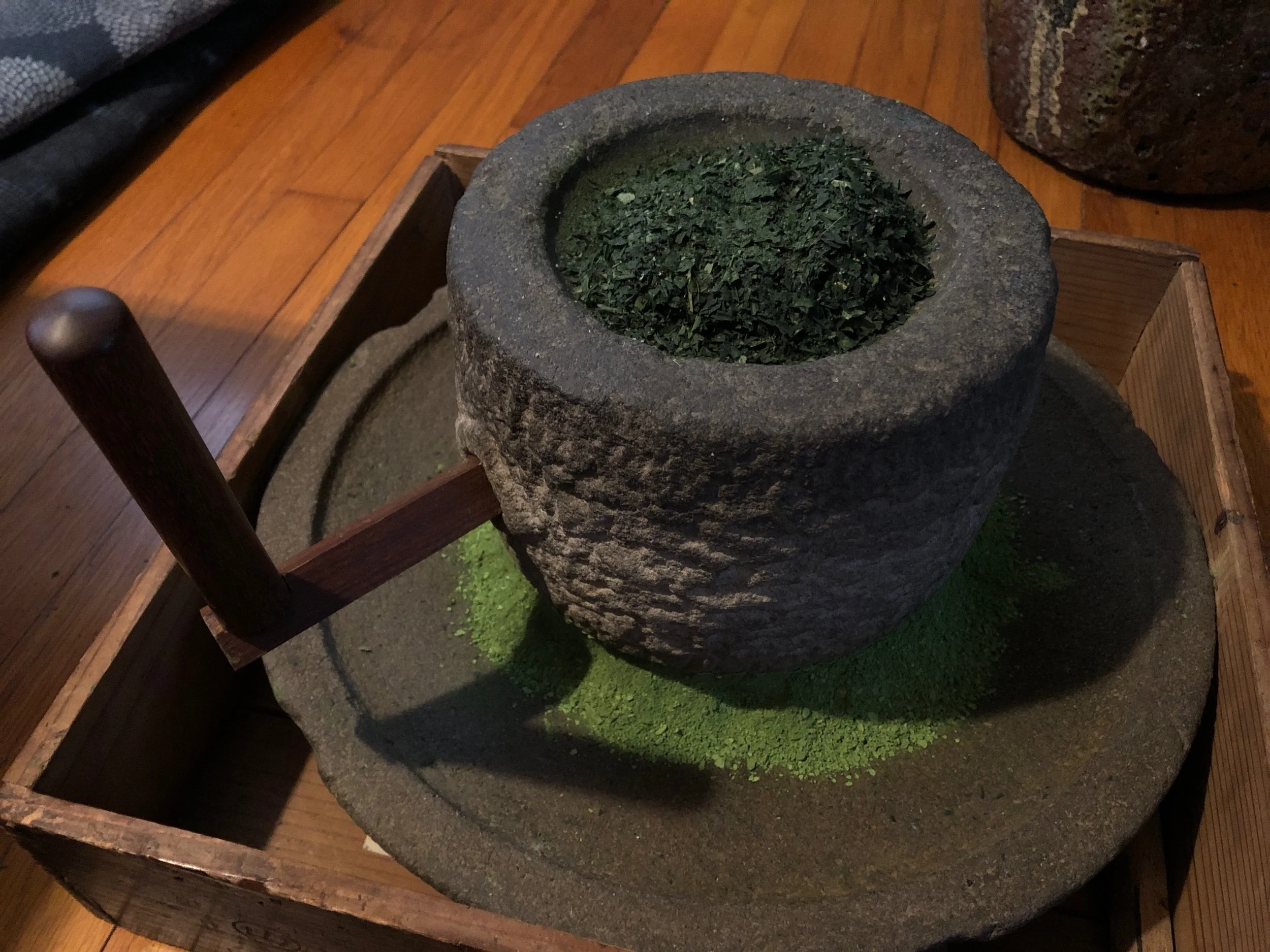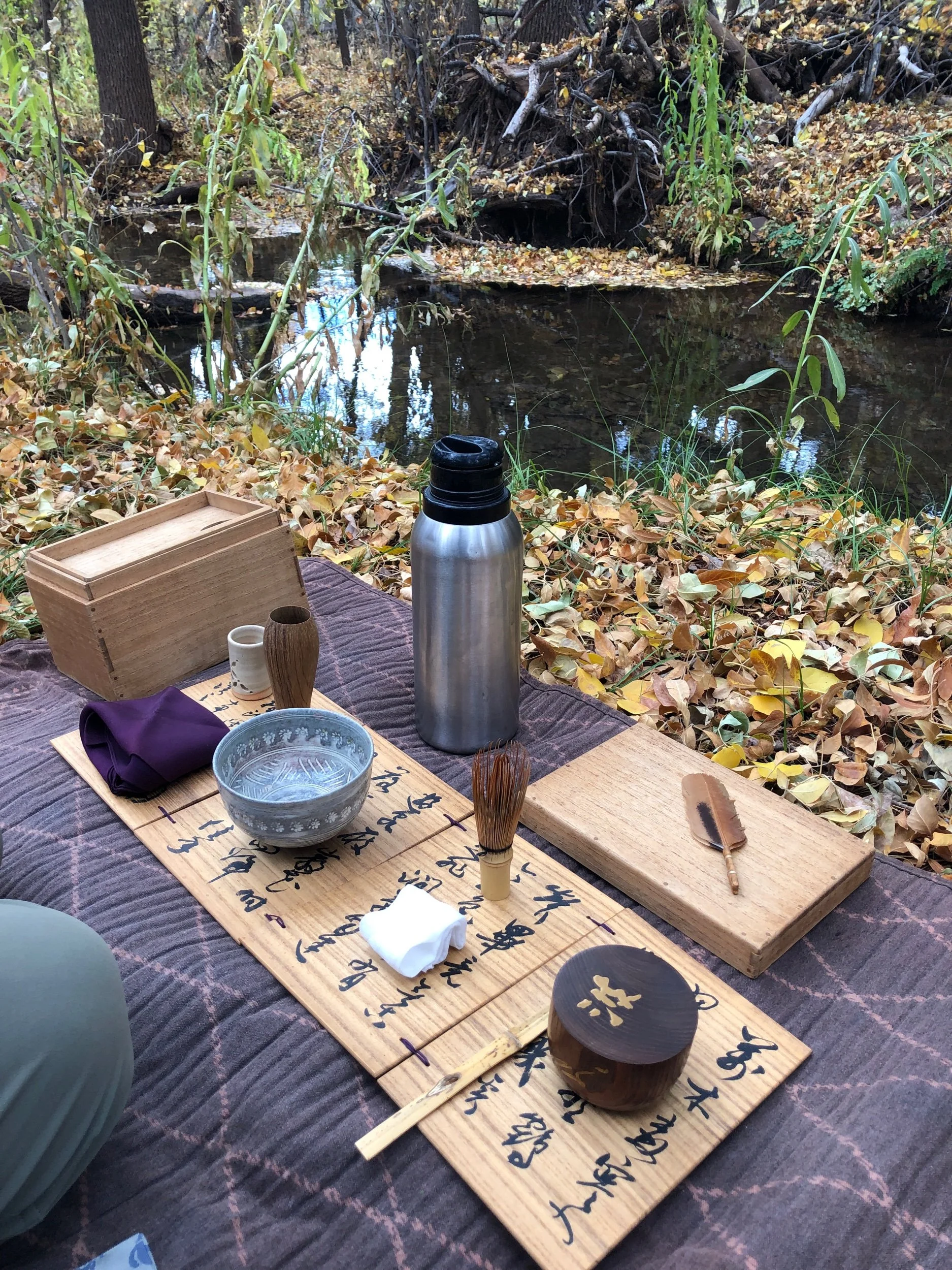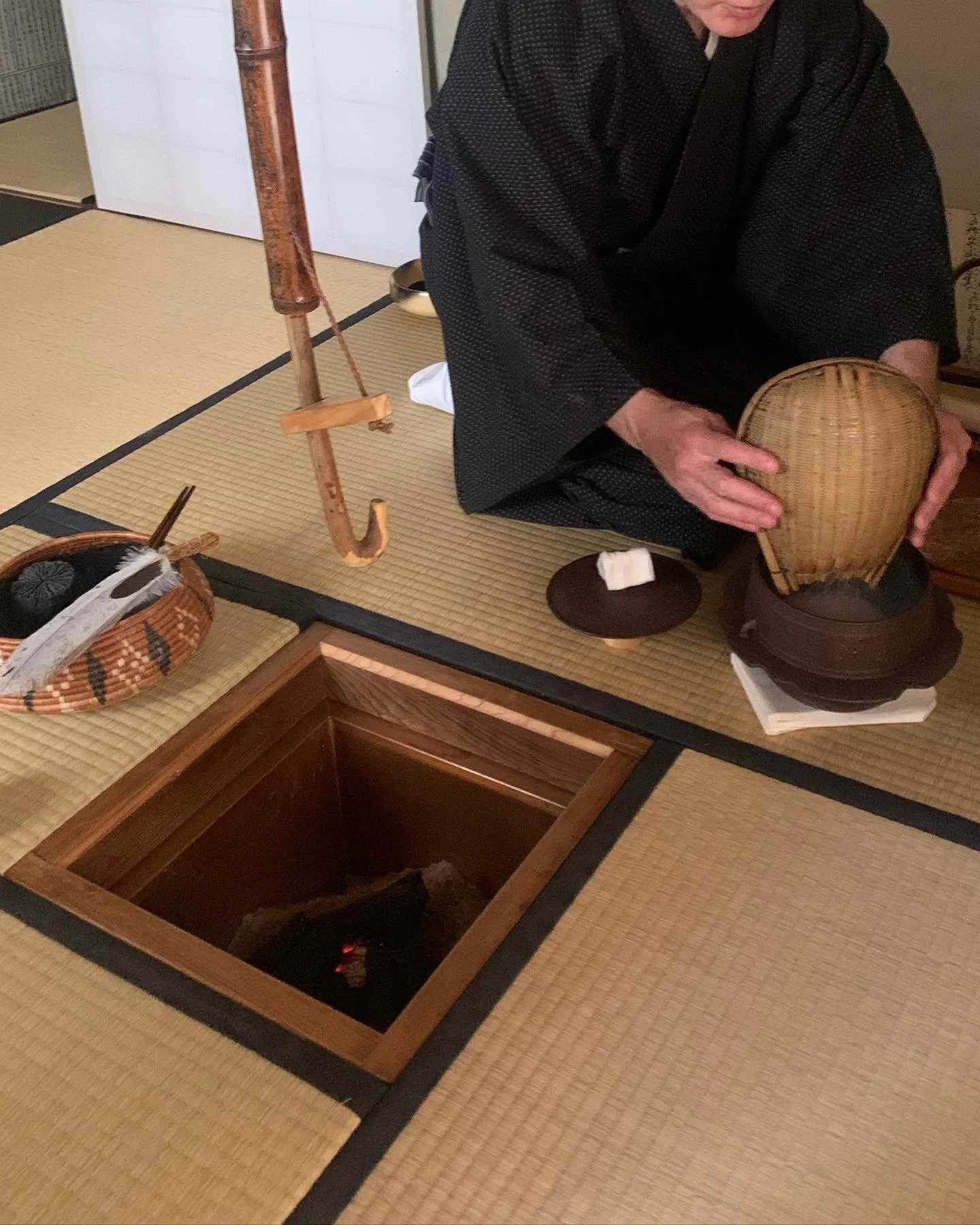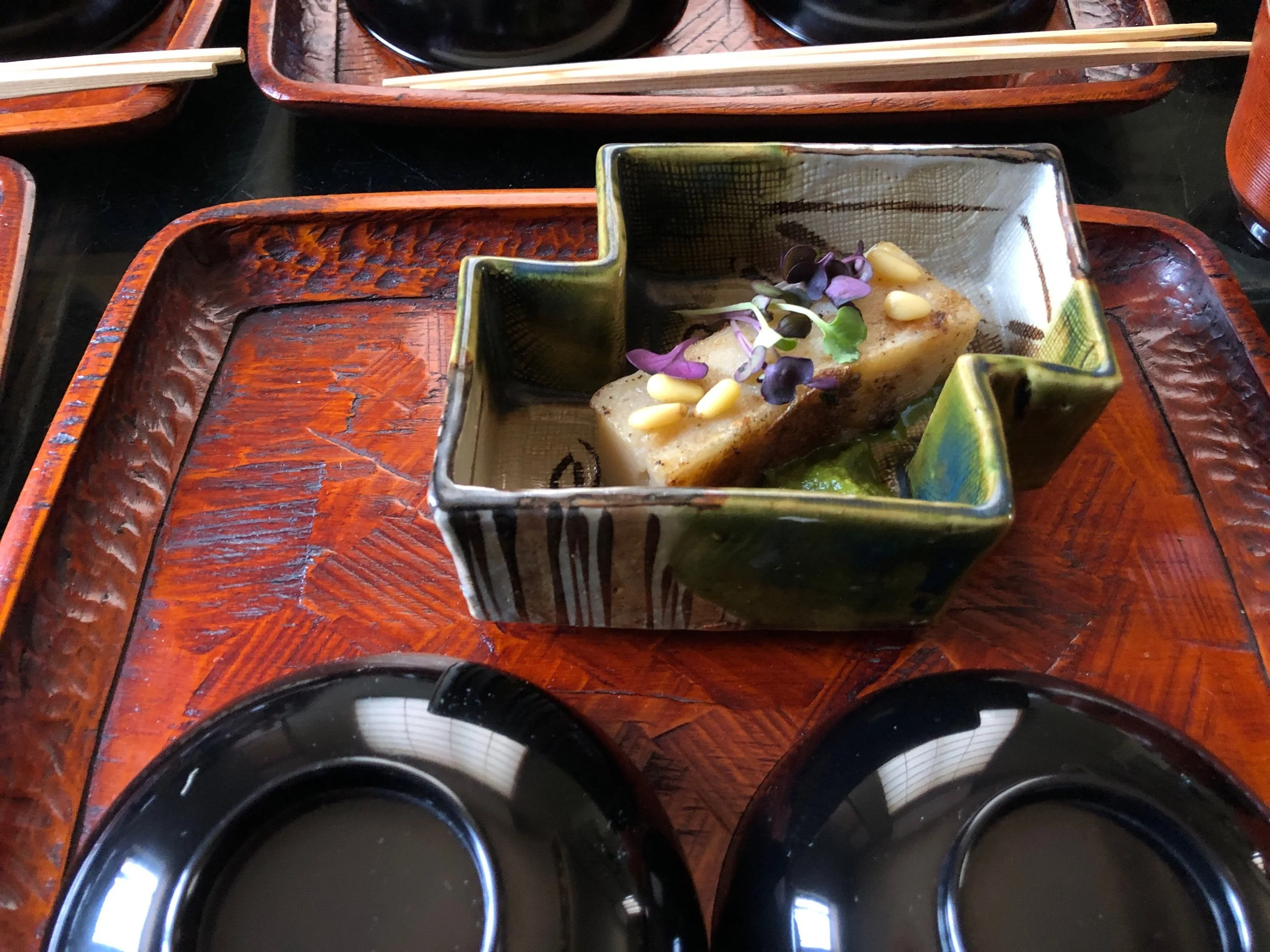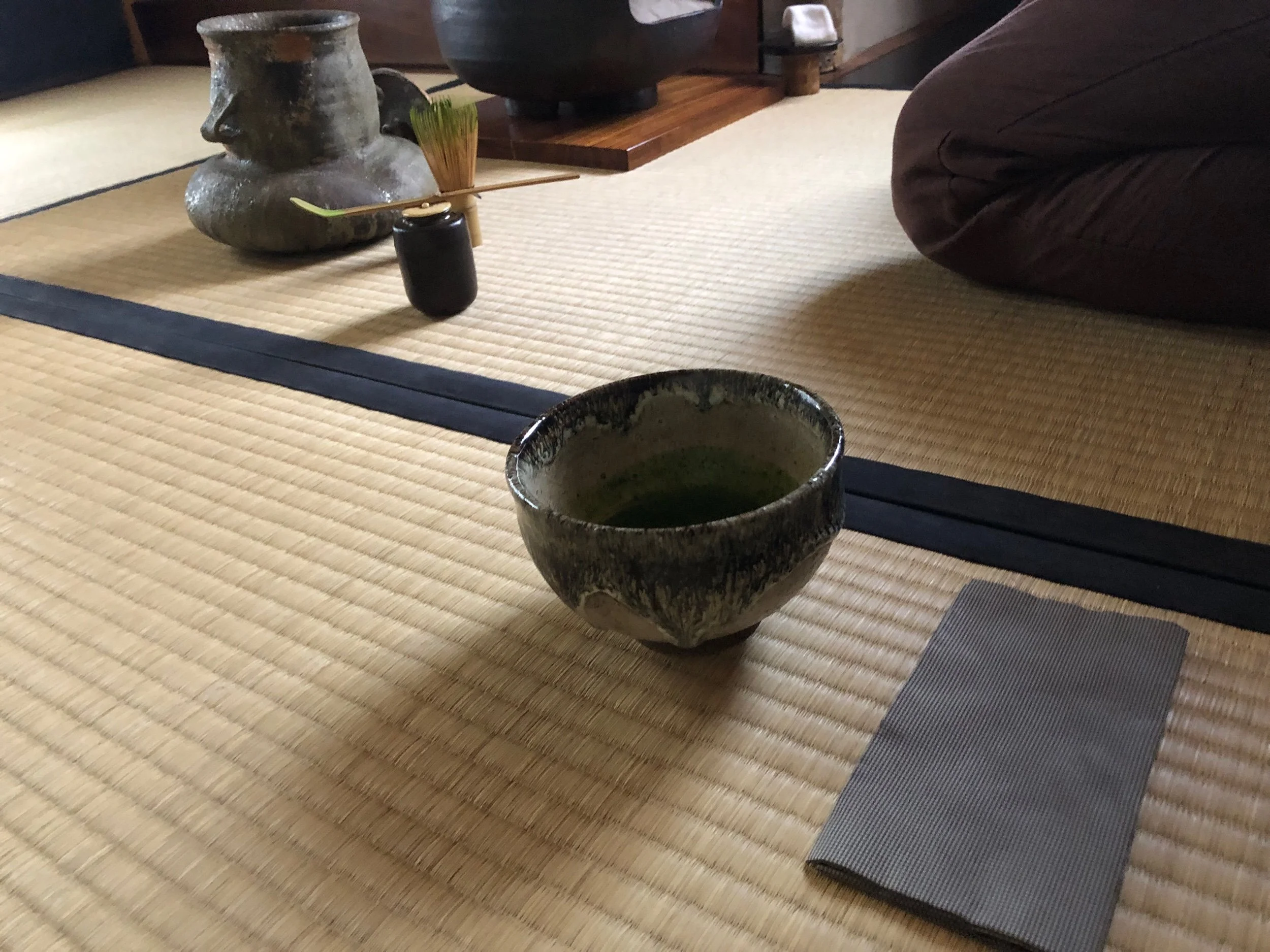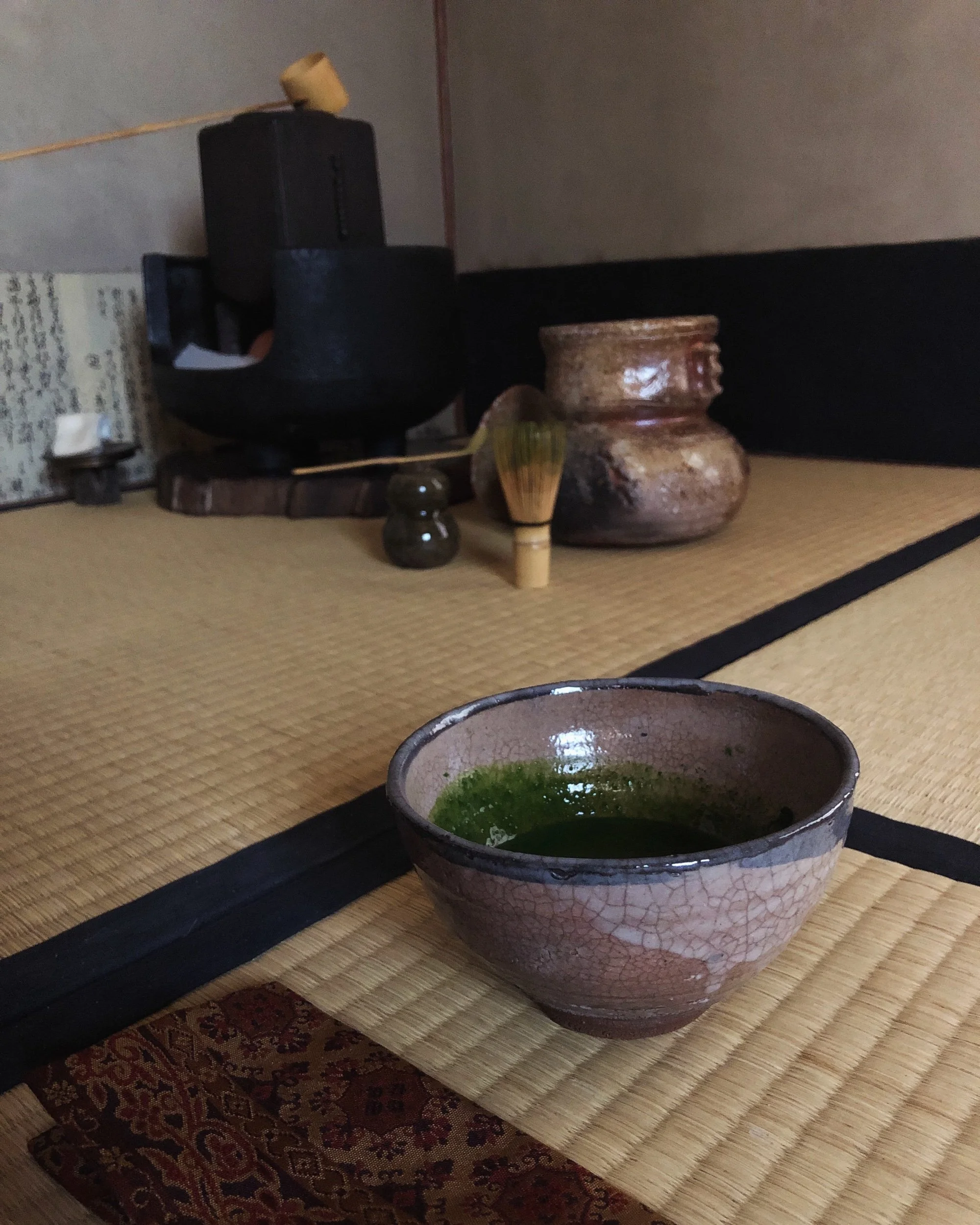THE JAPANESE WAY OF TEA in Tucson, Arizona
URASENKE TRADITION OF TEA
ABOUT Chanoyu 茶の湯
Chanoyu, also called Chado (literally the "Way of Tea"), is a synthesis of numerous philosophies and arts which culminate into a unique method of preparing and drinking matcha (powdered green tea) and kaiseki cuisine. Originating from the Chinese and Japanese Buddhist monastic traditions and then cultivated and nourished by the various traditions of tea since the 1500s, chanoyu is a discipline which transforms simple daily activities into the fine art of life. It is based on Sen Rikyu's seven principles, make a delicious bowl of tea; lay charcoal so that the water boils; provide a sense of warmth in the winter and coolness in the summer; arrange flowers as they are in a field; be ready ahead of time; be prepared in case it should rain; and with whom you find yourself give every consideration [without fuss]. Practicing these seemingly simple activities one soon discovers how challenging it is to carry them out without fail.
"Tea with us became more than idealization of the form of drinking; it is a religion of the art of life. The beverage grew to be an excuse for the worship of purity and refinement, a sacred function at which the host and guest joined to produce for that occasion the utmost beatitude of the mundane. The tearoom was an oasis in the dreary waste of existence where weary travelers could meet to drink tea from the common spring of art-appreciation. " -The Book of Tea by OKAKURA Kakuzo (1909)
At a tea gathering one leaves behind the everyday world and enters a rustic yet immaculate space where host and guest enjoy the subtle senses evoked by nature and the passing of time. Entering this space one usually is greeted by a scroll written by a Zen adept and a flower moist with dew. The host will first prepare the charcoal fire to heat the water, a light meal called cha-kaiseki or tenshin is sometimes served and then thick and thin tea prepared along with Japanese confection. The first serving of tea is koicha, fine quality matcha made thick by adding just enough water to make it flow. Koicha is always a more quiet and introspective part of a tea gathering so conversation is restrained. After the tea is drank the guests ask their host about some of the pieces selected especially for them such as the flower vase, tea caddy and bamboo teascoop, etc. After this the host prepares usucha which is a younger type of matcha and often more bitter so it is made with more water and is whisked to a froth. For usucha the host makes each guest their own bowl of tea and now the mood changes to become lighter and more relaxed. While topics of worldly concerns are left outside, here the conversation often turns to more poetic, congenial and artful topics.
There are many occasions which can be honored by the gathering of a few friends for tea. Each occasion is unrepeatable as it is inspired by events in our lives and the changing of seasons; the passage of time. While we sit in the tearoom we watch the light of the day change, the steam rise from the kettle and listen to the birds in the garden and the pouring of water from a moist bamboo ladle. U
Tea gatherings are delineated by the seasons, time of day and whether cha-kaiseki is served. A full tea gathering with kaiseki, called a chaji, of which there are numerous types, can last approximately four hours while a simple bowl of usucha can only take an hour or so. Time pieces are not allowed in the tearoom as time is something that we let take care of itself so we can be fully absorbed in its unfurling.
龜門宗光 Don KIMON SŌKŌ Lightner - Urasenke Chado Teacher
for inquiries:
(520)975-3983
Kimon Sōkō is ordained in the Zen tradition and is a certified Urasenke teacher. He teaches in the Urasenke curriculum with an emphasis on chaji and real life situations. He offers chaji with shojin ryori (vegan temple style) chakaiseki, classes in the history and styles of tea ceramics, calligraphy, chashaku history and carving workshops, and wagashi making. Kimon sensei has been a ceramic artist and calligrapher since 1995, and also makes shifuku, chashaku and built his tearoom Kansenan.
